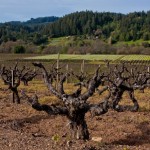Zinfandel: a primer
Zinfandel is often regarded as the quintessential California grape, and certainly has found a home in many locales around the state. Too many, actually, but that could be said of most grapes in California.
But overplanting has its upside: Eventually growers, vintners and consumers figure out where it performs best. For quality California zin, that means the Amador County/Sierra Foothills area, parts of Paso Robles and four valleys in Sonoma County (Dry Creek, Alexander, Sonoma and Russian River). Lodi is the state’s top producer, with about 40 percent of the volume, but the wines are uneven in quality.
Zin also performs exceedingly well in Napa’s Chiles Valley and Howell Mountain, and can shine throughout that county (the Hayne and Aida Vineyards rival any in the state/world). But the high costs of land and the outsized returns on cabernet sauvignon generally render zinfandel to redheaded-stepchild status in most of Napa.
Once believed to be a California native, zinfandel is now known to be identical to the Croatian grape Crljenak Kaštelansk (that’s easy for you to say) and the Italian primitivo.
 The vines can be quite prolific, which works great in the Central Valley for bulk wines and white zinfandel. Better results come as the vines age, producing fewer grapes and more concentrated fruit. They can live for 50 or even 100-plus years and come to resemble tree trunks (like the ones at left, from the Dry Creek Valley. Alas, there are no rules on the use of “old vine” on labels, so that’s no guarantee of quality.
The vines can be quite prolific, which works great in the Central Valley for bulk wines and white zinfandel. Better results come as the vines age, producing fewer grapes and more concentrated fruit. They can live for 50 or even 100-plus years and come to resemble tree trunks (like the ones at left, from the Dry Creek Valley. Alas, there are no rules on the use of “old vine” on labels, so that’s no guarantee of quality.
The grapes ripen very unevenly, and many growers wait and pick them late, with some of the grapes getting raisin-y and the overall sugar levels quite high. That makes for high-octane wines that often check in above 15-percent alcohol, and some of them are simply fruit bombs.
But the better vintners are adept at keeping zins balanced. In their hands, zinfandel does a great job of expressing its origins. Dry Creek Valley zins, for example, show bright red fruit and some dusty earthiness, with hints of black pepper. Paso Robles zins have darker, lusher fruit. Amador’s jammy fruit often is leavened by briary undertones.
Just because they can be large and in charge doesn’t mean zins aren’t food-friendly. They play nicely with most duck and lamb preparations, and can really shine with more casual fare. Aside from the occasional syrah, there’s no better match for barbecued ribs than a hearty zin. Pizza, burgers and brats cozy right up to zin. Dark chocolate, too.



